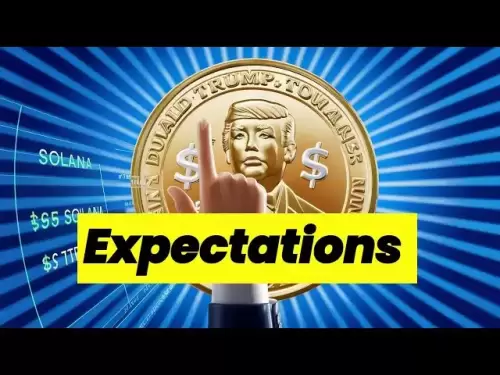-
 Bitcoin
Bitcoin $118100
0.44% -
 Ethereum
Ethereum $3765
5.84% -
 XRP
XRP $3.498
3.12% -
 Tether USDt
Tether USDt $1.000
0.00% -
 BNB
BNB $753.2
3.41% -
 Solana
Solana $181.7
3.58% -
 USDC
USDC $0.9999
0.01% -
 Dogecoin
Dogecoin $0.2704
12.75% -
 Cardano
Cardano $0.8684
5.85% -
 TRON
TRON $0.3151
-0.86% -
 Hyperliquid
Hyperliquid $46.06
4.51% -
 Stellar
Stellar $0.4695
2.48% -
 Sui
Sui $3.910
3.18% -
 Chainlink
Chainlink $19.36
6.65% -
 Hedera
Hedera $0.2750
3.99% -
 Bitcoin Cash
Bitcoin Cash $544.6
6.31% -
 Avalanche
Avalanche $25.12
3.69% -
 Shiba Inu
Shiba Inu $0.00001559
5.40% -
 Litecoin
Litecoin $116.8
5.10% -
 UNUS SED LEO
UNUS SED LEO $8.991
0.05% -
 Toncoin
Toncoin $3.283
2.79% -
 Polkadot
Polkadot $4.509
3.97% -
 Uniswap
Uniswap $10.67
6.58% -
 Ethena USDe
Ethena USDe $1.001
-0.01% -
 Monero
Monero $323.2
0.48% -
 Pepe
Pepe $0.00001410
6.37% -
 Bitget Token
Bitget Token $4.964
1.93% -
 Dai
Dai $0.9998
-0.01% -
 Aave
Aave $326.2
3.85% -
 Bittensor
Bittensor $421.8
2.46%
How to buy and sell Bitcoin on foreign trading platforms?
Trading Bitcoin on foreign platforms like Binance or Kraken involves choosing a secure site, setting up an account with 2FA, depositing funds, and executing buy or sell orders effectively.
Apr 19, 2025 at 03:14 am

Buying and selling Bitcoin on foreign trading platforms can open up a world of opportunities for cryptocurrency enthusiasts. Whether you are looking to diversify your portfolio or take advantage of different market conditions, understanding how to navigate these platforms is essential. This guide will walk you through the process step-by-step, ensuring you have all the information you need to trade Bitcoin effectively on international exchanges.
Choosing the Right Foreign Trading Platform
Selecting the right platform is crucial for a successful trading experience. Different platforms offer various features, fees, and security measures, so it's important to do your research. Popular foreign trading platforms include Binance, Kraken, and Bitfinex. When choosing a platform, consider factors such as:
- Security: Look for platforms with strong security measures, such as two-factor authentication (2FA) and cold storage for funds.
- Fees: Compare the trading fees and withdrawal fees among different platforms to ensure you are getting the best deal.
- User Interface: A user-friendly interface can make trading more efficient and less stressful.
- Regulation: Check if the platform is regulated by a reputable financial authority, which can add an extra layer of security.
Creating an Account on a Foreign Trading Platform
Once you have chosen a platform, the next step is to create an account. Here's how you can do it:
- Visit the Platform's Website: Navigate to the homepage of the chosen trading platform.
- Sign Up: Click on the "Sign Up" or "Register" button. You will be prompted to enter your email address and create a password.
- Verify Your Email: After signing up, you will receive an email with a verification link. Click on the link to verify your account.
- Complete KYC Verification: Most platforms require you to complete a Know Your Customer (KYC) process. This involves submitting identification documents, such as a passport or driver's license, and proof of address.
- Enable Two-Factor Authentication (2FA): For added security, enable 2FA on your account. This usually involves using an authenticator app like Google Authenticator.
Depositing Funds into Your Account
With your account set up, you'll need to deposit funds to start trading Bitcoin. Here's how to do it:
- Navigate to the Deposit Section: Log into your account and go to the "Deposit" or "Wallet" section.
- Choose Your Deposit Method: Select the currency you want to deposit, such as USD, EUR, or another cryptocurrency like Ethereum.
- Generate a Deposit Address: If you are depositing cryptocurrency, the platform will generate a unique address for you. Copy this address.
- Send Funds: Use your bank account or cryptocurrency wallet to send funds to the provided address. If you are depositing fiat currency, follow the platform's instructions, which may involve using a bank transfer or a payment service like PayPal.
- Wait for Confirmation: Once the funds are sent, wait for the platform to confirm the deposit. This can take anywhere from a few minutes to several days, depending on the method used.
Buying Bitcoin on a Foreign Trading Platform
Now that you have funds in your account, you can start buying Bitcoin. Here's a detailed guide on how to do it:
- Navigate to the Trading Section: Go to the "Trade" or "Exchange" section of the platform.
- Select the Bitcoin Trading Pair: Choose the trading pair you want to use, such as BTC/USD or BTC/EUR.
- Place an Order: Decide whether you want to place a market order or a limit order. A market order will buy Bitcoin at the current market price, while a limit order allows you to set a specific price at which you want to buy.
- Enter the Amount: Specify the amount of Bitcoin you want to buy. You can usually enter this amount in either Bitcoin or the fiat currency you are using.
- Review and Confirm: Double-check all the details of your order and confirm it. The platform will execute the order based on the current market conditions.
Selling Bitcoin on a Foreign Trading Platform
Selling Bitcoin is just as straightforward as buying it. Here's how to do it:
- Navigate to the Trading Section: Go to the "Trade" or "Exchange" section of the platform.
- Select the Bitcoin Trading Pair: Choose the trading pair you want to use, such as BTC/USD or BTC/EUR.
- Place an Order: Decide whether you want to place a market order or a limit order. A market order will sell Bitcoin at the current market price, while a limit order allows you to set a specific price at which you want to sell.
- Enter the Amount: Specify the amount of Bitcoin you want to sell. You can usually enter this amount in either Bitcoin or the fiat currency you are using.
- Review and Confirm: Double-check all the details of your order and confirm it. The platform will execute the order based on the current market conditions.
Withdrawing Funds from Your Account
After selling Bitcoin, you may want to withdraw your funds. Here's how to do it:
- Navigate to the Withdrawal Section: Go to the "Withdraw" or "Wallet" section of the platform.
- Choose Your Withdrawal Method: Select the currency you want to withdraw, such as USD, EUR, or another cryptocurrency like Ethereum.
- Enter the Withdrawal Amount: Specify the amount you want to withdraw.
- Provide a Withdrawal Address: If you are withdrawing cryptocurrency, enter the address of your external wallet. For fiat currency, follow the platform's instructions, which may involve providing bank account details.
- Review and Confirm: Double-check all the details of your withdrawal and confirm it. The platform will process the withdrawal, and the funds will be sent to your specified address or bank account.
Frequently Asked Questions
Q: Are there any risks associated with using foreign trading platforms?
A: Yes, there are risks involved, including security breaches, regulatory changes, and potential difficulties with customer support. Always ensure you are using a reputable platform and follow best practices for securing your account.
Q: Can I use a VPN to access foreign trading platforms?
A: While some platforms allow the use of VPNs, others may have restrictions. It's important to check the platform's terms of service to ensure you are not violating any rules.
Q: How do I handle taxes when trading Bitcoin on foreign platforms?
A: Tax regulations can vary significantly by country. It's advisable to consult with a tax professional to understand your obligations and ensure you are compliant with local tax laws.
Q: What should I do if I encounter issues with a foreign trading platform?
A: If you encounter issues, first try to resolve them through the platform's customer support. If that doesn't work, consider reaching out to any regulatory bodies that oversee the platform for further assistance.
Disclaimer:info@kdj.com
The information provided is not trading advice. kdj.com does not assume any responsibility for any investments made based on the information provided in this article. Cryptocurrencies are highly volatile and it is highly recommended that you invest with caution after thorough research!
If you believe that the content used on this website infringes your copyright, please contact us immediately (info@kdj.com) and we will delete it promptly.
- WLFI Token Trading: Community Approval and What It Means for You
- 2025-07-21 06:30:13
- Arctic Pablo: The Meme Coin Investment Opportunity Chasing Snow and ROI
- 2025-07-21 06:30:13
- Crypto & Institutions in July 2025: What's the Hype?
- 2025-07-21 04:30:12
- Pepeto, DOGE, SHIB Prices: What's Hot and What's Not in the Meme Coin Mania
- 2025-07-21 04:30:12
- Bitcoin Bulls Eye $125K Breakout: Is the Digital Gold Rush Back On?
- 2025-07-21 05:10:12
- Decrypting Crypto: Bitcoin's Real-World Utility and the Future of Finance
- 2025-07-21 05:15:12
Related knowledge

What is the significance of the 21-week EMA in a Bitcoin bull market?
Jul 10,2025 at 06:56pm
Understanding the 21-Week EMA in Cryptocurrency AnalysisThe 21-week Exponential Moving Average (EMA) is a technical indicator widely used by traders a...

How to identify a volatility contraction pattern on Bitcoin using indicators?
Jul 07,2025 at 07:28am
What is a Volatility Contraction Pattern in Bitcoin Trading?A volatility contraction pattern refers to a phase where the price movement of an asset, s...

Do indicators work better on a logarithmic or linear scale for Bitcoin's long-term chart?
Jul 08,2025 at 01:42pm
Understanding Chart Scales in Cryptocurrency TradingIn cryptocurrency trading, particularly for analyzing Bitcoin's long-term trends, chart scales pla...

What is the Woodies CCI indicator and can it be used for Bitcoin?
Jul 04,2025 at 05:14pm
Understanding the Woodies CCI IndicatorThe Woodies CCI indicator is a variation of the traditional Commodity Channel Index (CCI), which was originally...

How to use indicators to trade the opening range breakout for Bitcoin CME futures?
Jul 05,2025 at 07:35pm
What Is the Opening Range Breakout Strategy?The opening range breakout (ORB) strategy is a popular trading technique used in both traditional markets ...

How to use the Relative Vigor Index (RVI) for Bitcoin trading?
Jul 07,2025 at 02:00pm
Understanding the Relative Vigor Index (RVI)The Relative Vigor Index (RVI) is a technical analysis tool used to assess the strength of price movements...

What is the significance of the 21-week EMA in a Bitcoin bull market?
Jul 10,2025 at 06:56pm
Understanding the 21-Week EMA in Cryptocurrency AnalysisThe 21-week Exponential Moving Average (EMA) is a technical indicator widely used by traders a...

How to identify a volatility contraction pattern on Bitcoin using indicators?
Jul 07,2025 at 07:28am
What is a Volatility Contraction Pattern in Bitcoin Trading?A volatility contraction pattern refers to a phase where the price movement of an asset, s...

Do indicators work better on a logarithmic or linear scale for Bitcoin's long-term chart?
Jul 08,2025 at 01:42pm
Understanding Chart Scales in Cryptocurrency TradingIn cryptocurrency trading, particularly for analyzing Bitcoin's long-term trends, chart scales pla...

What is the Woodies CCI indicator and can it be used for Bitcoin?
Jul 04,2025 at 05:14pm
Understanding the Woodies CCI IndicatorThe Woodies CCI indicator is a variation of the traditional Commodity Channel Index (CCI), which was originally...

How to use indicators to trade the opening range breakout for Bitcoin CME futures?
Jul 05,2025 at 07:35pm
What Is the Opening Range Breakout Strategy?The opening range breakout (ORB) strategy is a popular trading technique used in both traditional markets ...

How to use the Relative Vigor Index (RVI) for Bitcoin trading?
Jul 07,2025 at 02:00pm
Understanding the Relative Vigor Index (RVI)The Relative Vigor Index (RVI) is a technical analysis tool used to assess the strength of price movements...
See all articles

























































































